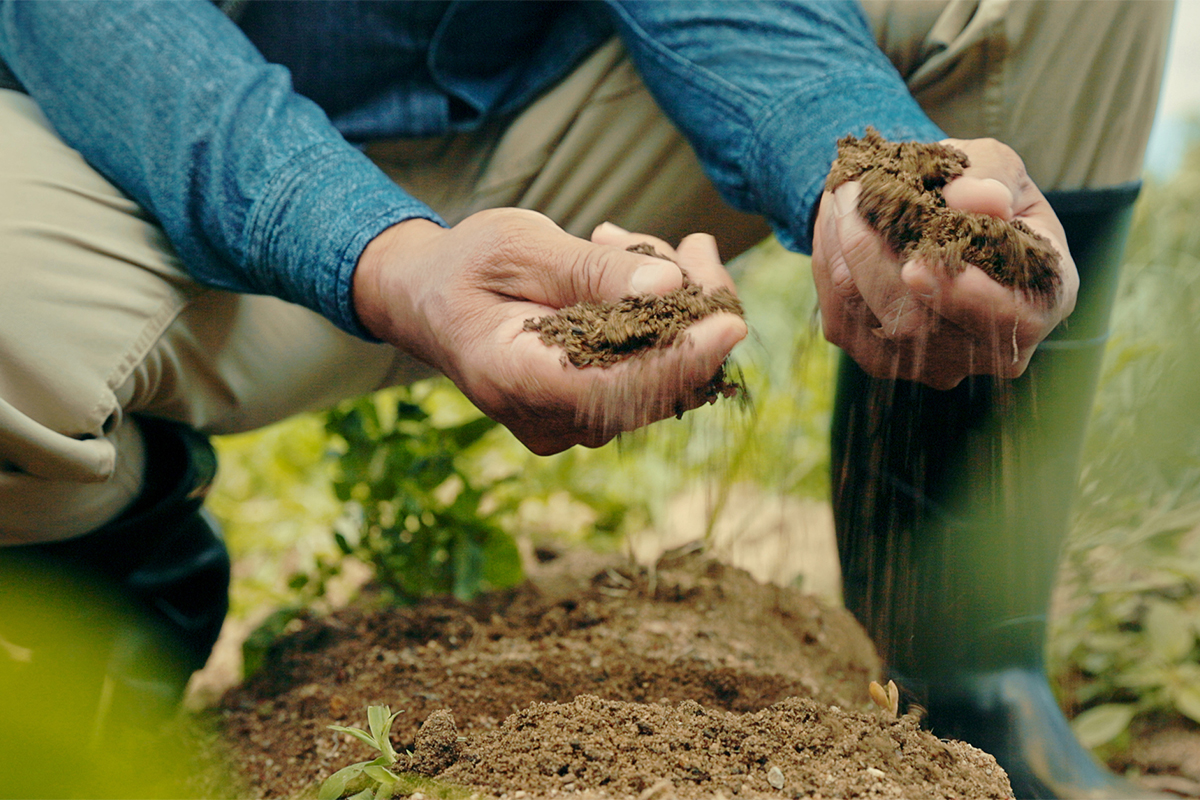The capacity of soil to hold water will be critical to determine how well farms in some regions of the United States manage the problem of prolonged heat stress due to climate change, a new study suggests. The journal Frontiers in Sustainable Food Systems published the finding, based on analyses of 30 years of data on four major U.S. crops: corn, soybeans, cotton and wheat.
“At the same time that farmers are facing more extreme weather events caused by climate change they are dealing with the growing problem of soil degradation,” says Debjani Sihi, first author of the study and assistant professor in Emory University’s Department of Environmental Sciences.
Sihi is a biogeochemist who studies environmental and sustainability issues at the nexus of soil, climate, health and policy.
Globally, according to Sihi and her co-authors, 750 million people were undernourished in 2019 due to the effects of climate change, including a decline in food production, hikes in food prices and increased competition for land and water.
And the problem of global food security is expected to intensify. World crop yields are projected to decrease by 25% overall within the next 25 years due to climate change, and yet global food production would need to double by 2050 to feed the projected growth in human population.
How soil impacts climate
“Keeping soil healthy is a key component needed to adapt to the climate crisis,” Sihi says. Healthy soil contains microbes that provide the nutrients needed for healthy plants to grow, she explains, while also helping make the plant foods that we eat more nutritious.
The presence of these microbes also improves the ability of soil to sequester carbon. The top 30 centimeters of the world’s soil contains about twice as much carbon as the entire atmosphere, making soil the second-largest natural carbon sink after oceans, according to the United Nations’ Food and Agriculture Organization.
The rise in average temperatures, however, is contributing to declines in soil moisture in some areas, which can impact crop production while also degrading the soil over the long term.
For the current paper, the researchers sought to quantify the long-term impact of climate and soil properties on yields of corn, soybeans, cotton and wheat across the mainland United States. They drew on county-level data of the U.S. Department of Agriculture from 1981 to 2015.
Their dataset contained precipitation rates and accumulation of average daily temperatures over a crop’s growing season, known as growing-degree days. The data also factored in soil variations, including water-holding capacity, organic matter texture (the percentage of sand, silt and clay), pH, slope, erodibility and soil-loss tolerance.
How farmers can adapt
The researchers used an explainable machine-learning approach to evaluate the impact on crop yields of each of these climate and soil variables. The results singled out growing-degree days as the most important climatic factor and water holding capacity as the most influential soil property for crop-yield variability.
“The take-home message,” Sihi says, “is that farmers in regions facing added heat stress for their crops may want to proactively focus on the water-holding capacity of their soil.”
Clay soil and soil rich in organic material holds water better than sandy soil, she explains. So farms with sandy soil, or with soils containing less organic material, may want to add more amendments to improve the water-holding capacity of the land. Another possible adaptation is to use more mulch to reduce evaporation.
The researchers hope that their findings will help farmers, land-management specialists and policy makers in decision-making related to sustainable and long-term soil-, water- and crop- management practices.
Co-authors of the study include Kanad Basu and Abraham Peedikayil Kuruvila from the University of Texas at Dallas; Biswanath Dari from North Carolina Agricultural and Technical State University and Gaurav Jha from Montana State University.
Funding for the work was provided by Emory University, North Carolina Agricultural and Technical State University and Montana State University.

